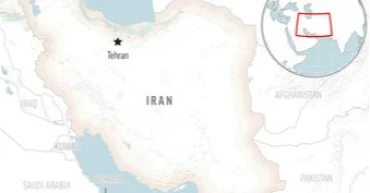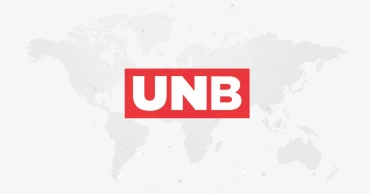Embassies
Iran, Saudi Arabia agree to resume relations after tensions
Iran and Saudi Arabia on Friday agreed to reestablish diplomatic relations and reopen embassies after years of tensions between the two countries, including a devastating attack on the heart of the kingdom's oil production attributed to Tehran.
The deal, struck in Beijing this week amid its ceremonial National People’s Congress, represents a major diplomatic victory for the Chinese as Gulf states perceive the United States slowly withdrawing from the wider Middle East. It also comes as diplomats have been trying to end a yearslong war in Yemen, a conflict in which both Iran and Saudi Arabia are deeply entrenched.
The two countries released a joint communique with China on the deal, which apparently brokered the agreement. Chinese state media did not immediately report on the deal.
Iranian state media posted images and video it described as being taken in China with the meeting. It showed Ali Shamkhani, the secretary of Iran’s Supreme National Security Council, with a Saudi official and a Chinese official that state TV named as Wang Yi.
“After implementing of the decision, the foreign ministers of the both nations will meet to prepare for exchange of ambassadors,” Iranian state television said. It added that the talks had been held over four days.
Saudi Arabian officials did not immediately respond to a request for comment from The Associated Press. Shortly after the Iranian announcement, Saudi state media began publishing the same statement.
Read more: Risky Gulf Arab strategy tested by killing of Iran general
Tensions have been high between Iran and Saudi Arabia. The kingdom broke off ties with Iran in 2016 after protesters invaded Saudi diplomatic posts there. Saudi Arabia days earlier had executed a prominent Shiite cleric, triggering the demonstrations.
In the years since, tensions have risen dramatically across the Middle East since the U.S. unilaterally withdrew from Iran's nuclear deal with world powers in 2018. Iran has been blamed for a series of attacks in the time since, including one that targeted the heart of Saudi Arabia's oil industry in 2019, temporarily halving the kingdom's crude production.
Though Yemen's Iranian-backed Houthi rebels initially claimed the attack, Western nations and experts have blamed the attack on Tehran. Iran long has denied launching the attack. It has also denied carrying out other assaults later attributed to the Islamic Republic.
The Houthis seized Yemen’s capital, Sanaa, in September 2014 and forced the internationally recognized government into exile in Saudi Arabia. A Saudi-led coalition armed with U.S. weaponry and intelligence entered the war on the side of Yemen’s exiled government in March 2015. Years of inconclusive fighting has created a humanitarian disaster and pushed the Arab world’s poorest nation to the brink of famine.
A six-month cease-fire in Yemen’s war, the longest of the conflict, expired in October despite diplomatic efforts to renew it. That led to fears the war could again escalate. More than 150,000 people have been killed in Yemen during the fighting, including over 14,500 civilians.
In recent months, negotiations have been ongoing, including in Oman, a longtime interlocutor between Iran and the U.S. Some have hoped for an agreement ahead of the holy Muslim fasting month of Ramadan, which will begin later in March.
The U.S. Navy and its allies have seized a number of weapons shipments recently they describe as coming from Iran heading to Yemen. Iran denies arming the Houthis, despite weapons seized mirroring others seen on the battlefield in the rebels' hands. A United Nations arms embargo bars nations from sending weapons to the Houthis.
Read more: Iran says oil tanker struck by missiles off Saudi Arabia
2 years ago
Amid brutal case surge, Afghanistan hit by a vaccine delay
Afghanistan is battling a brutal surge in COVID-19 infections as health officials plead for vaccines, only to be told by the World Health Organization that the 3 million doses the country expected to receive by April won’t be delivered until August.
“We are in the middle of a crisis,” Health Ministry spokesman Ghulam Dastigir Nazari said this week, expressing deep frustration at the global vaccine distribution that has left poor countries scrambling to find supplies for their people.
Nazari has knocked on the door of several embassies, and so far, “I’ve gotten diplomatic answers” but no vaccine doses, he said.
Over the past month, the escalating pace of new cases has threatened to overwhelm Afghanistan’s health system, already struggling under the weight of relentless conflict. In part, the increase has been blamed on uninterrupted travel with India, bringing the highly contagious Delta variant, first identified in India.
Also, most Afghans still question the reality of the virus or believe their faith will protect them and rarely wear masks or social distance, often mocking those who do. Until just a week ago, the government was allowing unrestricted mass gatherings.
Read:NATO chief says Afghan forces can cope alone
The Delta variant has helped send Afghanistan’s infection rate soaring, hitting 16 provinces and the capital Kabul the hardest. This week, the rate of registered new cases reached as high as 1,500 a day, compared to 178 a day on May 1.
Hospital beds are full, and it is feared rapidly dwindling oxygen supplies will run out. Afghan ambassadors have been ordered to seek out emergency oxygen supplies in nearby countries, Foreign Minister Haneef Atmar said in a tweet Friday.
By official figures, Afghanistan has seen a total 78,000 cases and 3,007 deaths from the pandemic. But those figures are likely a massive undercount, registering only deaths in hospitals, not the far greater numbers who die at home.
Testing is woefully inadequate. In only the past month, the percentage of positive COVID tests has jumped from about 8% to 60% in some parts of the country. By WHO recommendations, anything higher than 5% shows officials aren’t testing widely enough, allowing the virus to spread unchecked.
At most only 3,000 tests a day are carried out, as Afghans resist testing, even after the country dramatically ramped up its capabilities to 25,000 a day.
Only recently, the government tried to take steps to clamp down to contain the surge. It closed schools, universities and colleges for two weeks. It also shut down wedding halls, which had been operating unhindered throughout the pandemic.
But it is rare to see anyone wearing a mask in the streets, and even where masks are mandatory, like in government offices, it’s rarely enforced. As many as 10 flights arrive daily from India, packed with Afghans, particularly students and people who had gone to India for medical treatment.
Read: Afghans who helped the US now fear being left behind
Nazari said banning flights was not an option since many Afghans cannot afford to be stranded in India and the government cannot prevent citizens from re-entering their own country.
For vaccines, Afghanistan so far has relied on a donation of AstraZeneca doses from India and then purchases of Sinopharm from China. About 600,000 people have had at least one dose, about 1.6% of the population of 36 million. But the number who have gotten a second dose is minute — “so few I couldn’t even say any percentage,” Nazari said.
Last month, the ministry received a letter from WHO saying the expected shipment of 3 million vaccine doses will not arrive until August due to supply problems, Nazari said. With just 35,000 vaccine doses remaining in the country, the authorities were forced to stop giving first jabs to use remaining supplies to give second jabs, he said.
Poor countries around the world have been pleading for vaccines even as developed nations have been able to inoculate significant portions of their populations. COVAX, set up with U.N. help to try to prevent vaccine inequities, has struggled to fill the gap. It faced a major setback when its biggest supplier, the Serum Institute of India, announced last month that it would not export any vaccines until the end of the year because of the surge in that country.
“Honestly speaking, I lost my faith in COVAX,” Nazari said.
“Unfortunately, there are countries who vaccinated more than their 50% or 60% percent of the population ... and there are countries who did not receive vaccines to even vaccinate 1% of their population.”
At the Afghan-Japan Communicable Disease Hospital, Kabul’s only hospital dedicated solely to COVID treatment, all 174 beds are full. The Health Ministry opened roughly 350 more beds for coronavirus patients in another three hospitals, but they too quickly filled up. This week, people were being turned away.
Read: Death toll soars to 50 in school bombing in Afghan capital
Each day three or four people die of COVID at the Afghan-Japan Hospital, said hospital administrator Dr. Zalmai Rishteen.
Doctors struggle with the public’s refusal to take precautions and follow safety protocols. “Our people believe it is fake, especially in the countryside,” Rishteen said. “Or they are religious and believe God will save them.”
In the hospital’s intensive care unit, Dr. Rahman Mohtazir said that only makes it more dangerous for him as he does his job. “I am afraid I will catch it, but I am here to help,” he said. “I listen to people and they say it’s fake. Then they come here.”
The Health Ministry has recruited clerics, prominent religious figures and local elders to encourage vaccination and anti-coronavirus precautions.
The worsening COVID situation prompted the U.S. Embassy on Thursday to issue a health alert warning of shortages of supplies, oxygen and beds at hospitals and urging American citizens to “to leave Afghanistan as soon as possible.”
4 years ago



